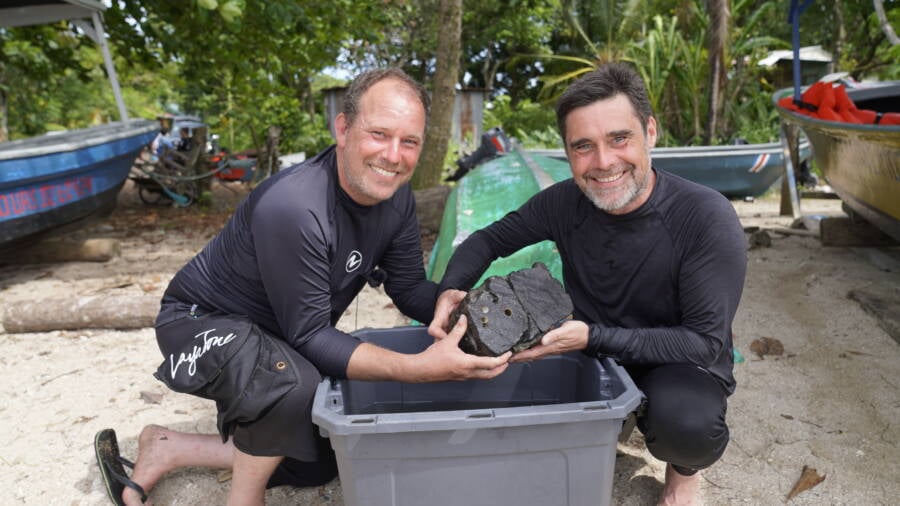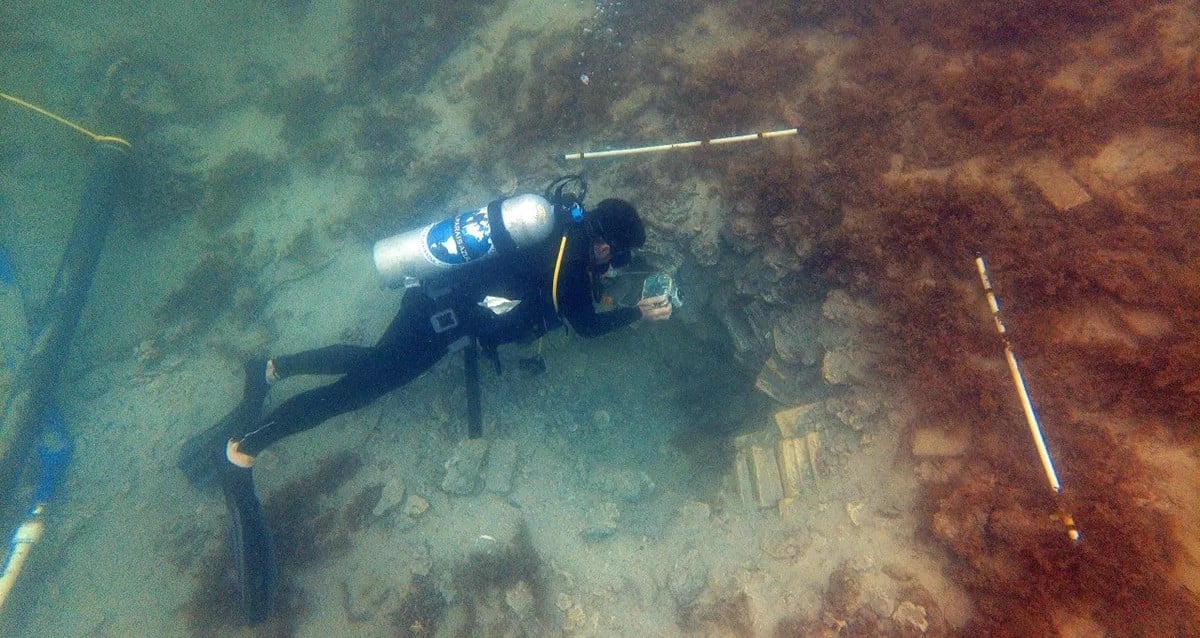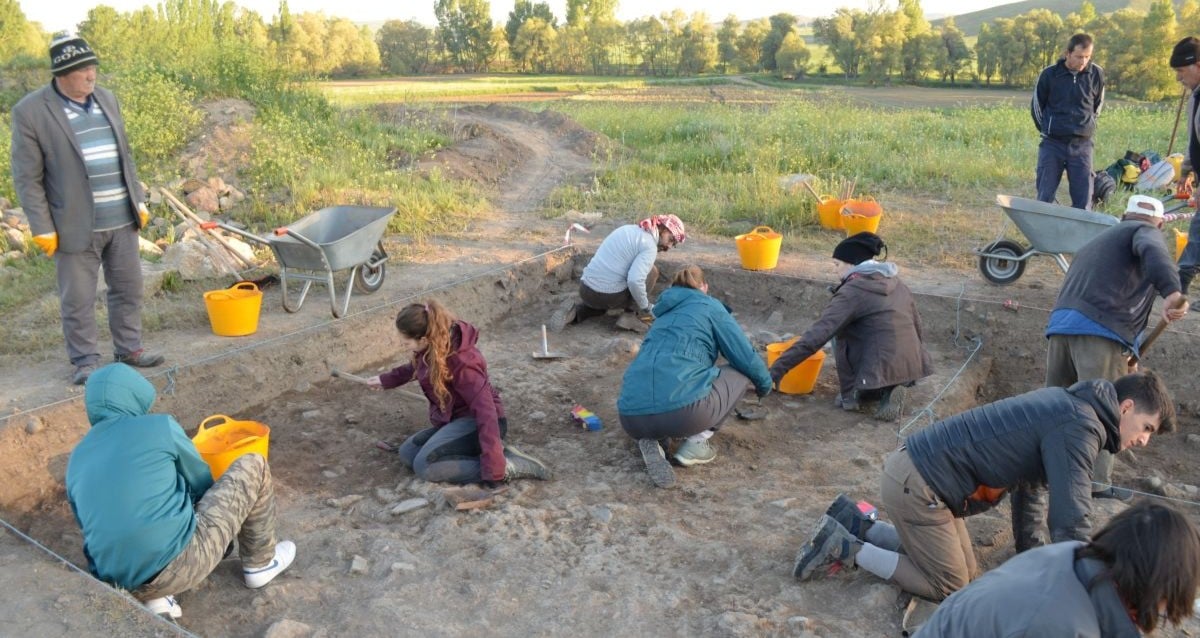Hidden Secrets of the Caribbean Unveiled: Divers Discover Sunken Danish Slave Ships Lost to a 1710 Mutiny
“The analyses are very convincing and we no longer have any doubts that these are the wrecks of the two Danish slave ships,” said David Gregory, marine archaeologist and research professor at the National Museum of Denmark. “The bricks are Danish and the same goes for the timbers, which are additionally charred and sooty from a fire. This fits perfectly with the historical accounts stating that one of the ships burnt.”
The Harrowing Story Of The Fridericus Quartus And The Christianus Quintus

John Fhær Engedal Nissen, the National Museum of DenmarkMarine archaeologists David Gregory and Andreas Kallmeyer Bloch from the National Museum of Denmark with timber from the shipwrecks.
Discovering the location of the Fridericus Quartus and the Christianus Quintus is an exciting development, especially after historians had long known full well what happened to these two doomed ships during their final journey 300 years ago.
According to historical documents, including testimony from the crew members who survived the shipwrecks, the Fridericus Quartus and the Christianus Quintus set sail in 1708 from Copenhagen. Their journey took them to West Africa, where the ships picked up hundreds of enslaved people, and then towards Saint Thomas Island in the West Indies.
But in the spring of 1710, the ships got lost. Some 1,200 miles off course, the two ships began to run low on food and water rations. And on March 2, 1710, the crews and the enslaved people on both ships mutinied. The Fridericus Quartus was set on fire, and the Christianus Quintus had its anchor rope cut, resulting in it wrecking in the surf. Subsequently, some 600 of the enslaved Africans escaped — and joined the local population in Costa Rica.













